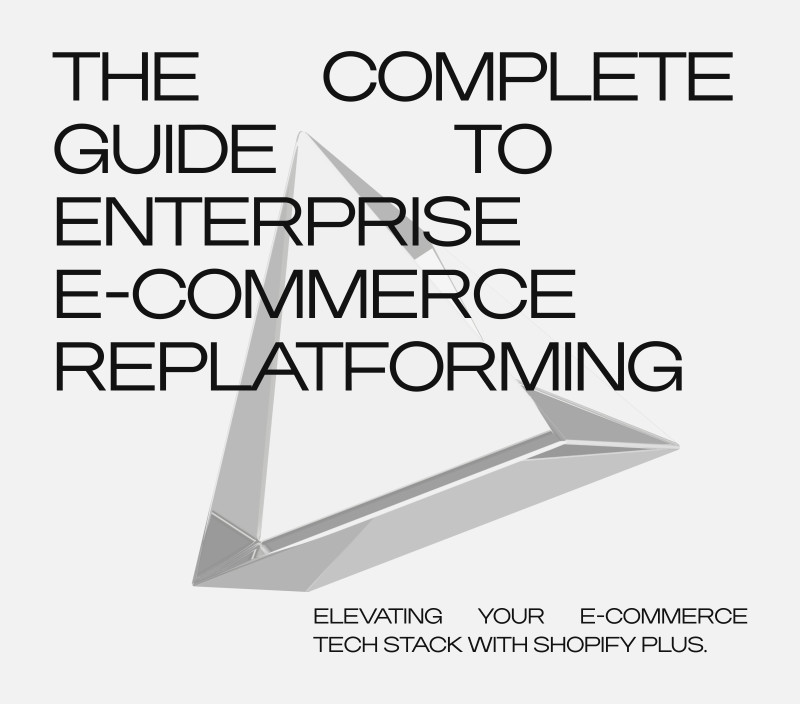Safeguarding SEO During Platform Migration

Quick Summary Explore strategies to maintain your SEO authority during site migration, whether it involves a domain name change or a complete backend platform transition.
Replatforming or migrating your e-commerce site to a different backend commerce platform often triggers a common concern: the potential impact on your store’s search performance.
In essence, if not carefully managed, this process can diminish your site's SEO visibility and ranking in search results.
However, there are strategies to mitigate such disruptions, many of which, despite requiring technical expertise, adhere to straightforward principles.
In this blog, we'll delve into the intricacies of site migration, focusing on its SEO implications and strategies to preserve your rankings.
When executed carefully, refreshing your site and restructuring your e-commerce web presence need not compromise your SEO authority. In fact, it can potentially enhance your ranking potential, especially if you're migrating your e-commerce storefront intending to enhance flexibility.
What is eCommerce Site Migration?
The concept of e-commerce migration is flexible and can vary greatly depending on the specific case scenarios. It encompasses a wide array of changes, from minor adjustments in branding to major backend replatforms.
Check out the Complete Guide to Enterprise Replatforming
During a website migration, significant modifications are often made to elements such as the URL structure, content, user experience (UX), design, and platform. These changes may involve updating the website layout, fine-tuning the URL structure, or transitioning to a new domain or content management system (CMS).
In this post, we'll discuss strategies for maintaining your SEO authority during site transitions, whether it involves a domain name change or a complete backend platform migration.
What impact does e-commerce site migration have on SEO?
Navigating site migrations requires meticulous planning and execution. Without a systematic approach and a well-defined roadmap, the risk of instantly undermining your hard-earned SEO credibility is considerable. This risk encompasses various adverse outcomes, including loss of authority, lower search engine rankings, and reduced visibility, all of which ultimately culminate in diminished conversion rates.
What’s more, remedying any adverse effects on SEO efforts isn’t’ a matter of flipping the switch; it can be a time-consuming and intricate undertaking that often requires extensive SEO expertise.
Preserve your SEO Ranking During a Migration
Pre-launch
Audit and Crawl Existing and New Sites:
To safeguard your SEO authority during an eCommerce migration, you must plan, plan and plan some more. You’ll want Google, and other search engines, to understand the changes you roll out. How? By mapping out these changes and communicating them effectively to search engines through XML sitemaps and structured data markups.
An invaluable tool for this process is Google Search Console, which enables you to submit an XML sitemap, analyze your current and upcoming site's crawl, and guide Google on indexing your new site.
Additionally, Google Search Console offers the capability to audit your existing site's SEO performance. This enables you to establish a baseline for your current metrics and provides a basis for comparison with your new site's performance.
Pre-launch, it's essential to thoroughly crawl your existing site to identify all indexable pages. This step is crucial as it allows you to determine which pages are currently active and need to be mapped to your new site and which pages are broken and need to be worked on.
Rework Content:
When undergoing an e-commerce site migration, it's imperative to go beyond merely addressing the technical facets of SEO and focus on optimizing your content comprehensively. This holistic approach is key to substantially improving your rankings for targeted keywords.
To kickstart this process, prioritize thorough keyword research and develop a robust strategy to optimize your content accordingly. Moreover, ensure your content is seamlessly integrated with a user-friendly site structure that facilitates intuitive navigation for visitors.
Consider whether your customers can effortlessly access the information they seek on your site. Are the categories and subcategories clearly labelled and logically organized? Do they align with the page titles and meta descriptions, enhancing visibility and user experience overall?
By addressing these aspects during the migration process and pre-launching your new site, you not only bolster your SEO efforts but also enhance the overall usability and effectiveness of your e-commerce site.
Create a Sitemap:
A robust sitemap is the cornerstone of a successful migration, encompassing all pages intended for indexing by Google and delineating key aspects such as site taxonomy and URL structure. The site taxonomy, emphasizing logic and clarity, outlines how content will be structured, facilitating easy comprehension for search engines and seamless navigation for visitors. Clear and intuitive URL structures ensure product pages are appropriately nested under relevant categories or subcategories, enhancing overall user experience and search engine visibility.
At its core, the importance of an XML sitemap during e-commerce migration lies in its ability to preserve the digital ecosystem meticulously cultivated over time. Each URL, each page, represents a piece of your online presence—a culmination of efforts in SEO, user experience, and brand identity. Without a comprehensive sitemap, the risk of losing this hard-earned equity looms large, potentially leading to a decline in visibility, traffic, and ultimately, revenue.
A good place to start is by conducting a thorough inventory of your current website's pages, including product pages, category pages, informational pages, blog posts, and any other relevant content. Use tools like Google Analytics, website crawlers, or content management systems to compile a complete list.
Set up Redirects:
As you navigate the complexities of technical SEO during a migration, remember: that redirecting your pages isn't just a precautionary measure; it's a strategic imperative for preserving and enhancing your online presence. Redirects act as signposts, guiding traffic from old URLs to their new destinations, preserving hard-earned SEO equity and maintaining website integrity.
Whether you're migrating to a new domain, restructuring your website, or refining your URL hierarchy, strategic redirections safeguard against broken links, prevent loss of organic traffic, and sustain your website's authority in the ever-evolving landscape of search engine rankings.
To aid Google in comprehending your redirects, it's essential that your new URLs closely resemble your old ones. This is crucial because Google begins its exploration of your new site from the old pages, tracing links from there to navigate the transition.
It's advisable to configure your redirects as 301 redirects to assist Google in this process.
Launch
After meticulously testing your website's functionality, verifying the integrity of all links, and confirming the accuracy of your site mapping, the moment arrives for the official launch. As part of this process, it's imperative to submit your XML sitemap to Google via the Search Console. This action ensures that Google's search engine algorithms can promptly index and understand the structure of your website, laying the foundation for optimal visibility in search results.
Upon launching, it's also essential to conduct live testing. Despite thorough testing in controlled environments, the real-world scenario may present unforeseen challenges. Live testing allows you to validate that the redirects, which were meticulously set up and tested in the development phase, are functioning seamlessly in the live environment.
Post Launch
Now that you’ve done live testing on launch day, it’s worth noting that testing and optimization efforts don’t stop there. Post-launch is when you want to establish a routine of consistent monitoring to track your site's SEO performance.
In the dynamic landscape of SEO, monitoring is essential for several reasons. Firstly, it allows you to gauge the immediate impact of the migration on your website's visibility, traffic, and search rankings. By closely tracking key metrics such as organic traffic, keyword rankings, and indexing status, you can identify any fluctuations or anomalies and address them promptly.
Moreover, ongoing monitoring enables you to detect and address any technical issues or errors that may arise post-migration. Whether it's broken links, crawl errors, or indexing issues, vigilant monitoring empowers you to identify potential issues before they escalate and impact your website's performance.
Lastly, monitoring provides valuable insights into the effectiveness of your SEO strategies and tactics following the migration. By analyzing trends and patterns over time, you can refine your approach, optimize your content, and adapt your strategies to align with evolving search engine algorithms and user behaviours.
At Avex, we set your digital storefront up for exemplary indexing and ranking in the competitive landscape. From optimizing website content and architecture to improving website speed and user experience, our e-commerce engineers will help you increase organic traffics by improving your storefront's authority and credibility in the eyes of search engines - pre, post migration and beyond!



